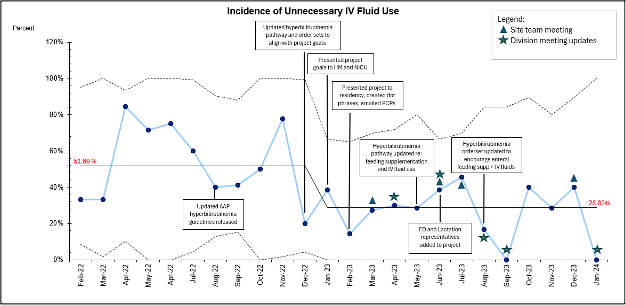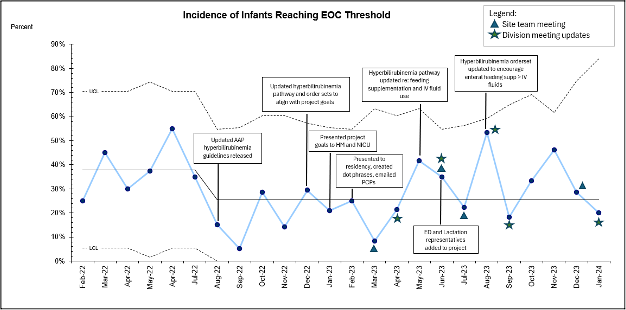Hospital Medicine 1: Quality Improvement
Session: Hospital Medicine 1: Quality Improvement
548 - Decreasing Unnecessary IV Fluids in Infants Requiring Phototherapy for Hyperbilirubinemia
Saturday, April 26, 2025
2:30pm - 4:45pm HST
Publication Number: 548.4255
Brittany Wold, Phoenix Children’s Hospital, Phoenix, AZ, United States; Merritt ten Hope, Primary Children's Hospital, Phoenix, AZ, United States; Jennifer Hall, Phoenix Children's Hospital, Phoenix, AZ, United States
.jpg)
Brittany Wold, MD
Pediatric Hospitalist
Phoenix Children’s Hospital
Phoenix, Arizona, United States
Presenting Author(s)
Background: The AAP updated the clinical practice guideline (CPG) for management of neonatal hyperbilirubinemia in 2022. Our institution participated in the American Academy of Pediatrics (AAP) Value in Pediatrics project Learning & Implementing Guidelines for Hyperbilirubinemia Treatment (LIGHT) with the goal of promoting standardized care of term infants with hyperbilirubinemia according to the updated CPG.
The CPG recommends intravenous fluids (IVF) for infants with dehydration unable to be corrected enterally or a total serum bilirubin (TSB) at or above the escalation of care (EOC) threshold. Baseline data collection revealed unnecessary IVF in well appearing infants admitted for phototherapy with TSB levels below EOC threshold (median= 51.69%).
Objective: Decrease the proportion of well-appearing infants ≥35 weeks gestational age undergoing phototherapy who receive unnecessary IVF per the 2022 CPG to ≤5% by January 31, 2024.
Design/Methods: Phoenix Children’s is a 400-bed free standing non-birthing children's hospital. Baseline data was collected from 2/1/22 to 1/31/23. LIGHT project interventions were implemented 2/1/23 and data was collected each month through 1/31/24 on infants ≥35 weeks GA who received phototherapy between 0-14 days old.
Outcome Measure:
1) Percentage of infants ≥35 weeks GA undergoing phototherapy between 0-14 days with TSB below EOC threshold who receive IVF
Balancing Measures:
1) Percentage of infants ≥35 weeks GA undergoing phototherapy between 0-14 days old who reach or exceed EOC threshold during phototherapy
2) Number of infants ≥35 weeks GA readmitted for phototherapy within 4 days of previous phototherapy discontinuation
LIGHT project interventions included educational webinars, coaching sessions, informational handouts and example order sets/note templates.
Site specific interventions included:
1.) Updated institutional order set and pathway
2.) Hospital medicine and NICU education
3.) Resident and local PCP education
4.) Dot phrase implementation for documentation
5.) Addition of members from emergency department and lactation
Data was analyzed using statistical process control (SPC) charts.
Results: While we did not decrease the proportion of unnecessary IVF use to 5% or less, we were successful in decreasing it by 22.86%. We observed a decrease in infants who reached EOC threshold as well as readmission for phototherapy.
Conclusion(s): This study confirms that IVF are not necessary for healthy infants being admitted for hyperbilirubinemia. By implementing simple strategies that can be applied across institutions we were successful in decreasing IVF use across our hospital.
Figure 1. SPC Chart: Unnecessary IVF use

Figure 2. SPC Chart: Incidence of Infants Reaching EOC Threshold



